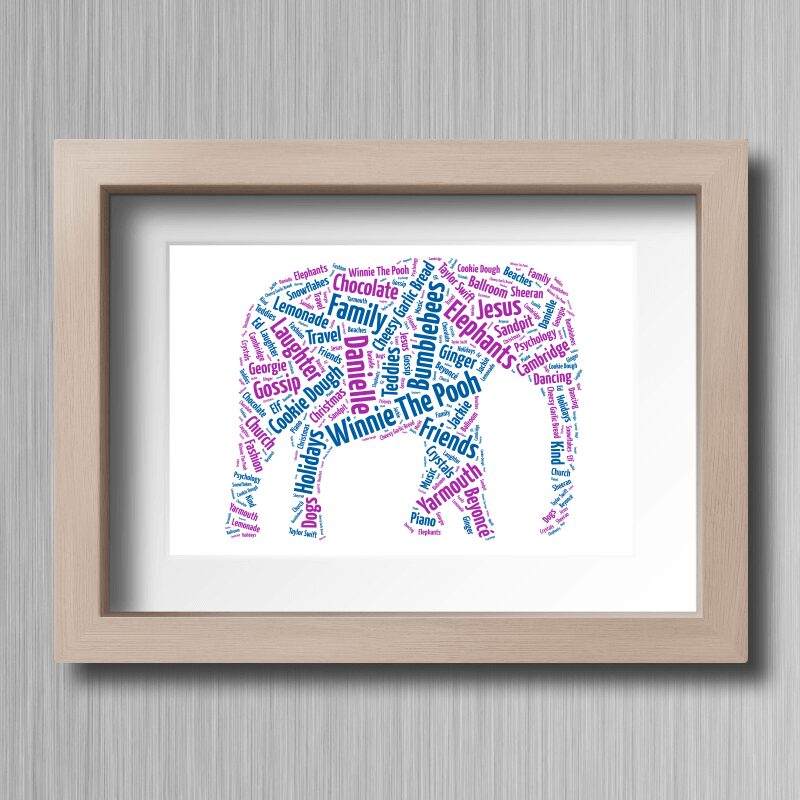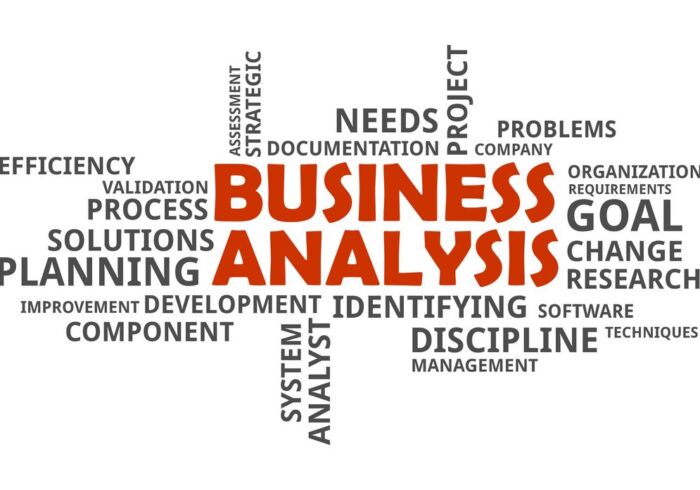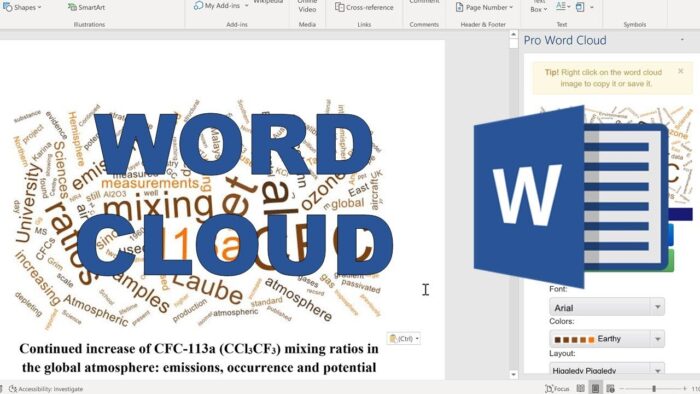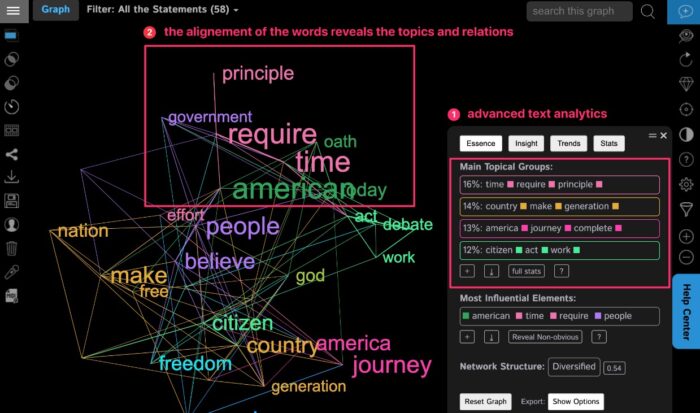
Data visualizations (like charts, graphs, infographics, and more) give businesses a valuable way to communicate important information at a glance, but what if your raw data is text-based? If you want a stunning visualization format to highlight crucial textual data points, using a word cloud can make dull data sizzle and immediately convey essential information.
When looking at an in-depth data analysis, do you find it difficult to discern which points are the most important?
Anyone who’s ever stared blankly at a lengthy database or long pages of text can relate. How do you know where to begin with so many insights to comprehend?
The generators can help simplify this process.
If you’ve ever looked at a jumble of disparate words that seem not to correlate until you investigate further, you’ve seen a word cloud. These are potent tools across myriad industries, from art to science.
Today, we’re exploring their use in the field of data visualization. Ready to learn more? Let’s get started!
What Are Word Clouds?

Word clouds (text clouds or tag clouds) work: the more a specific word appears in a source of textual data (such as a speech, blog post, or database), the bigger and bolder it appears. It is a collection, or cluster, of words depicted in different sizes. The bigger and bolder the word appears, the more often it’s mentioned within a given text and the more critical it is.
Also known as tag clouds or text clouds, these are ideal ways to pull out the most pertinent parts of textual data, from blog posts to databases. They can also help business users compare and contrast two pieces of text to find the wording similarities between them.
Perhaps you’re already leveraging advanced data visualization techniques to turn your essential analytics into charts, graphs, and infographics. This is an excellent first step, as our brains prefer visual information over any other format.
Yet, what do you do if your raw data is text-based?
Much of your organization’s research will include at least some form of an open-ended inquiry that prompts respondents to give a textual answer.
For instance, you might ask current customers what they like or don’t like about your new product line. Or, you could ask them to give suggestions on how your organization could improve. They could also have the chance to elaborate on any pain points they’re experiencing.
Industry tools allow you to code such open-ended data so users can understand it quantitatively. Yet, these don’t come cheap. Word clouds offer a cost-effective yet influential alternative.
With these, you can still quantify your text-based insights into measurable analytics. The only difference? You won’t create a chart or graph as you would with a set of numbers.
Instead, you’ll create a generator to transform the most critical information into a word cloud.
What Is A Word Cloud Generator?

As its name implies, an online generator is a tool that scans a body of text, turning it into component words. From there, it can create a word cloud highlighting the most frequently mentioned words. If you don’t prefer the cluster shape, most tools enable you to format the word cloud in various ways, including:
- Horizontal lines
- Columns
- Formed to fit a specific shape
Most providers will also allow users to choose different layouts, fonts and color schemes depending on their preference. This means you can make one match your brand’s color scheme, partners, or clients. Create word clouds with Shapecloud to make it look unique.
While the color holds a primarily aesthetic value, you can contrast the hues to help categorize words or illustrate a separate data variable.
How To Make A Word Cloud Easily?

Their increasing popularity shows that making a word cloud for your website or business isn’t difficult. Still, some essential considerations must be made so your visualization is more than just eye candy. While they can be incredible tools for data visualization, it’s crucial to understand how to use them correctly.
1. Optimize Your Data Set
First, you’ll want to get a valuable, text-based data set. Make sure your data set is text-based and optimized for context. Copying and pasting textual data into a generator might not give you the exact insights you need.
2. Use A Generator Tool
Once your data set is in place, your next step is to run it through a generator tool. Check your individual tool’s policies to see if your word cloud will be used this way. There are many online resources and apps you can use to perform this step, including:
- Wordle
- Tagxedo
- Tag Crowd
- WordItOut
- Generator for Chrome
- Python tools
- Google tools
3. Export The Word Cloud

Once you create it, you must move it from the program to your files. Some platforms will enable you to download the image as a PDF, although many won’t make that easy. Sometimes, you’ll have to take a screenshot of the image and save it. Before you close out of the program and start reviewing the data, there’s one security precaution to keep in mind.
While most of the programs above are either free or low-priced, remember that there can be some drawbacks to their convenience. For instance, it saves it to its virtual portfolio whenever you create a word cloud.
This might not be a deal-breaker if the data you’re compiling and analyzing isn’t confidential or highly sensitive. Yet, working in an industry (such as healthcare or banking) that emphasizes confidentiality and customer data protection can render the service unusable. It’s also a drawback if you use a word cloud for marketing purposes. If anyone can search the generator’s portfolio, nothing stops them from tapping into your most compelling data.
An easier, safer and all-around better route to take? Create your word cloud from scratch rather than relying on an online program to do the work for you.
Exporting from a free tool might take some work. Sometimes, if download as an image or PDF isn’t available, you’ll be forced to take a screenshot – a less-than-elegant solution.
Here’s what to do if you want your word cloud to be noticed: consider designing it from scratch!
The Best Generators Are Custom
Around the world, we’re creating and sharing more data than ever, and the trend shows no sign of stopping.
From sales numbers to online traffic rates, you’ve likely got plenty of quantitative data to analyze and discuss. Yet, are you making as much use of your qualitative inputs?
These are often some of the most insightful data points your organization can leverage. They’re full of opinions, long-form feedback, and personal reflection. Word cloud generators can help make the most of this content, one visual at a time.
Are you ready to discover the power of word clouds for yourself? Professionals can help.














